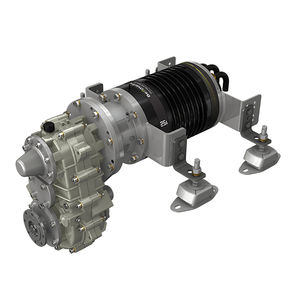
#Inboard motor portable
Heavier, not portable as opposed to outboards.More labor intensive and frequent maintenance.The disadvantages of inboard motors include: Inboard motors have some inherent disadvantages you’ll want to consider before making the decision on what type of motor you’ll need for your boat. There is no boat motor that can do it all and be used for every situation. What are the disadvantages of inboard motors? If these benefits that can be had from an inboard motor sound appealing to you, you may want to dig deeper and seriously consider an inboard motor for your next boat. Allows for a swim platform at the stern.Better suited for watersports i.e., wakeboarding, tubing, water skiing.Inboard motors have many advantages that make them useful for many boating situations. What are the advantages of inboard motors? Although they’re not perfect for every situation, chances are there’s an inboard motorboat that will suit your needs. Inboard motors have many uses, so there’s not much they can’t do. In fact, some of the largest engines in the world are inboard engines used to power large ships. Larger cruising boats i.e., cuddy cabins, cabin cruisers, yachtsĭue to their higher torque ratio and the size limitations of outboard motors, the largest commercial vessels use inboard engines.While some types of boats have the choice of an inboard or outboard motor, there are some boats that have to use an inboard because of the size and shape of the boat.Ī few common recreational boats that are typically equipped with an inboard motor are: Once fuels such as gasoline and diesel came into use in the late 1800’s, inboards were created for petroleum-based fuels and boat engines became more powerful and fuel-efficient because of them.Īlthough the inboard boat motor was one of the first widely used fuel-burning propulsion systems, much of the same design is still used today. Tracing their roots to the 19 th century, the first boat engines were steam-powered. Ultimately, choosing between an inboard and out board motor is up to you.Inboard motors were one of the first types of engines used to power boats without the use of sail or oars. Out board motors are more economical, easier to maintain, but don ’ t always have the same power. In board motors offer greater thrust and power, but involve more maintenance and cost more than an out board motor. Which is better for your boat depends on the size of your boat, the type of bo ating you plan to do, your budget, and the amount of maintenance you ’ re willing to put into the motor. On the downside, they can ’ t produce the same power or thrust that an in board engine can and are more likely to require maintenance due to their exposure to the elements.

Plus, they ’ re generally cheaper than in board motors. Out board motors are mounted on the transom of the boat, so they ’ re less of a hind rance when it comes to storage and service. Commonly, owners will use multiple outboard motors to match the power of an inboard while keeping the convenience of an outboard motor. They ’ re usually more lightweight than in board motors and are gasoline – powered.

They have an advantage in that they can be detached from the boat and transported to a dealer for repairs or to be changed more easily. Out board motors are designed for smaller, lighter boats used mainly for recreation and short trips. Plus, they ’ re integrated into the boat ’ s power, so if something goes seriously wrong, you ’ ll need to have the inboard motor removed to have it repaired. In board motors typically run on diesel or gasoline fuel and require regular maintenance, such as oil changes and anti – cor ros ion treatments, to keep them operating at peak performance. In board motors are mounted on the hull of the boat, either trans versely or long itud inally, and generally they ’ re heavier and more expensive than out board motors. They have the power to take on calm waters, and large sw ells, as well as rou g her coastal and deep sea waters.

In board motors are an ideal choice for boats designed for longer trips, heavier loads, and occasional high speeds. Each has its own pros and cons, so finding the best option for you will depend on the specific needs of your boat and the type of bo ating you plan to do. Sure, both provide propulsion – but in different ways. The in board vs out board motor debate is like comparing apples and oranges.


 0 kommentar(er)
0 kommentar(er)
